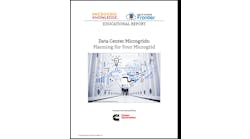If cybersecurity and compliance are at the top of your organization’s priority list, you’ve undoubtedly heard a lot of chatter around the U.S. Department of Defense (DOD) Cybersecurity Maturity Model Certification (CMMC) 2.0. But what’s all of the hype about? I can promise you that it’s more than just a fleeting trend—in fact, CMMC 2.0 could become your most powerful cybersecurity secret weapon.
Developed to ensure companies working with the DOD uphold the highest cybersecurity and regulatory requirements while reinforcing the importance of safeguarding national security information, CMMC 2.0 represents a pivotal shift in the approach organizations must take to safeguard their digital assets and sensitive information. It presents a critical opportunity for businesses to differentiate themselves in a highly competitive marketplace, empowering them to bid on and win more highly regulated contracts. And it’s going to be a requirement faster than you may think—defense contractors could begin seeing CMMC stipulations phased into contracts as early as 2025.
Understanding CMMC 2.0
CMMC 2.0 builds upon the original 1.0 framework and is heavily aligned with the National Institute of Standards and Technology Special Publication 800-171 (NIST SP 800-171). NIST requires procedural and management documentation and review of cyber events to ensure sensitive information on federal contractors’ IT systems and networks is protected.
To ensure companies are focusing on the most crucial requirements, the DOD streamlined CMMC 2.0 down to three compliance levels, each outlining specific cybersecurity practices and processes for mitigating a variety of threats:
- Level 1 adheres to Federal Acquisition Regulation (FAR) 52.204-21
- Level 2 directly aligns with NIST SP 800-171 and requires verification by a third-party auditor to approve security standards, conduct a risk management assessment and meet stringent compliance standards.
- Level 3 follows the same NIST SP 800-171 protocols and requires the same third-party audit verification as Level 2 while following some additional process controls from NIST SP 800-172.
Achieving CMMC compliance is a lengthy, intensive and potentially costly process, but we’ve seen how the time and resources can pay off in major ways for providers and their customers. In a highly competitive data center and MSP market, it’s a distinguishing factor that showcases a provider’s future-ready, responsible approach to cybersecurity, solidifying their position as a reliable partner capable of safeguarding critical data and assets. CMMC compliance increases providers’ appeal across industries, empowering them to expand their market reach to a wide range of businesses seeking a trusted, security-focused partner. And, by partnering with a CMMC-compliant infrastructure provider, customers can confidently show that they’re equipped to enforce the risk management best practices and incident response capabilities necessary to unlock access to lucrative government contracts.
Planning for CMMC 2.0
While the official CMMC 2.0 deadline has yet to be published, it’s never too early to start the process—especially if you want to beat your competition to the punch. The implementation timeframe will depend on the level of certification you’re required to comply with, the current state of your NIST SP 800-171 implementation and the size and scope of your system. On average, achieving CMMC Level 1 compliance will take approximately six to eight months, while CMMC Levels 2 and 3 will take most organizations nine to twelve months to achieve.
In addition to the significant time commitment, obtaining CMMC certification will require some expenses. These expenses will vary based on the certification level and whether third-party assessments are involved, the complexity of your business and your current infrastructure and security compliance, and can range from about $3,000 for Level 1 to as much as $100,000 for Level 3.
Organizations should also prepare for the ongoing expenses necessary after certification. Reassessment is typically required every three years for Levels 2 and 3, which aligns with the three-year validity of CMMC certificates and is an annual requirement for Level 1 self-assessments.
CMMC 2.0: Your New Secret Weapon
By getting ahead of the game to embrace CMMC 2.0, data centers and MSPs will unlock a powerful secret weapon for them and their customers to succeed in today’s highly regulated landscape. The trust and expertise showcased by CMMC-compliant organizations is worth is weight in gold amid the current explosion of digital expansion and AI adoption. Adhering to stringent regulations and achieving proactive security certification signifies an organization’s deep commitment to cybersecurity best practices in order to position them as trustworthy partners in an ever-evolving cyberthreat landscape where data protection is paramount. Those who invest in and embrace CMMC 2.0 will gain a sharp competitive edge, positioning them to secure lucrative contracts across industries and lead the charge in cybersecurity excellence.

John Kehoe
John Kehoe, Chief Operating Officer at ark data centers, is passionate about leveraging his extensive manufacturing and executive leadership expertise to help customers streamline their operations and maximize their security so they can stay ahead of the competition. Connect with John on LinkedIn.
ark data centers is a modern digital infrastructure brand with assets spanning uniquely positioned data centers across emerging edge markets, robust network infrastructure and IXs to respond to the AI surge. Learn more about ark at https://www.arkdna.com/.






